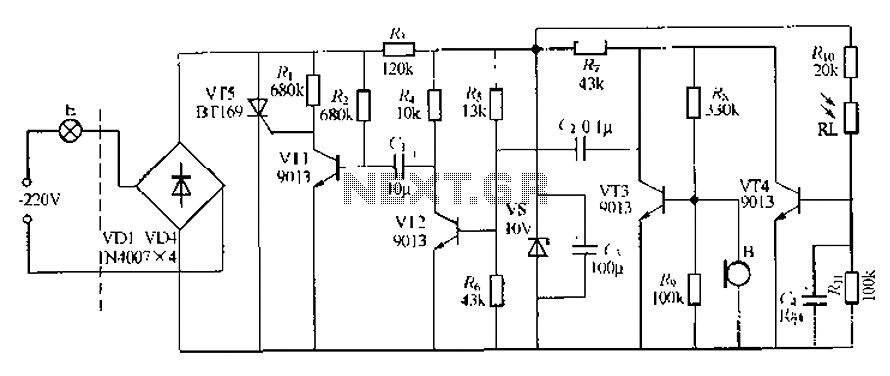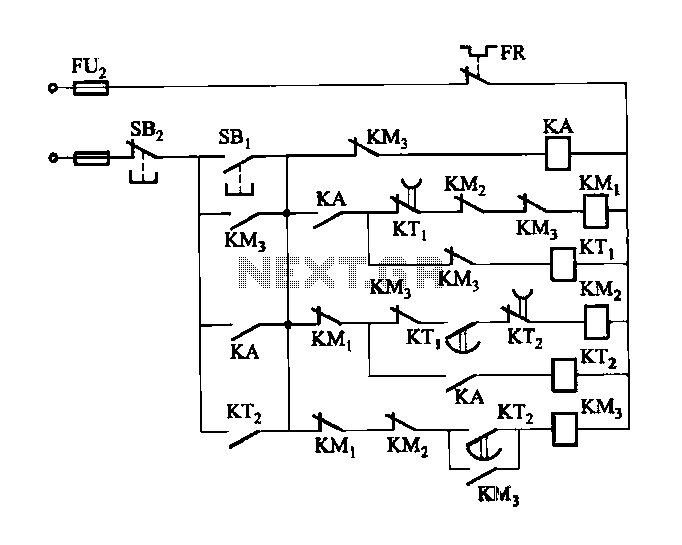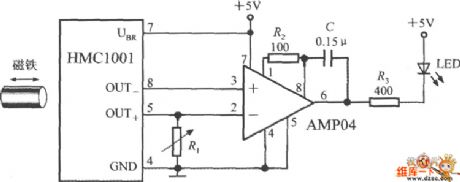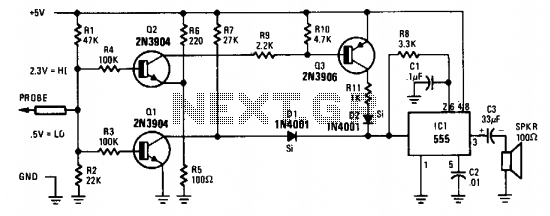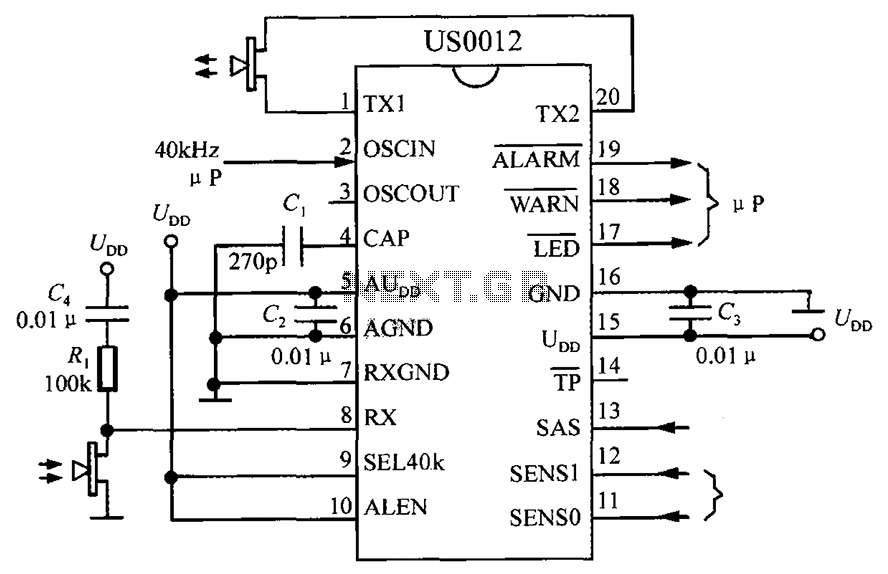
Logic probe yields three discrete states
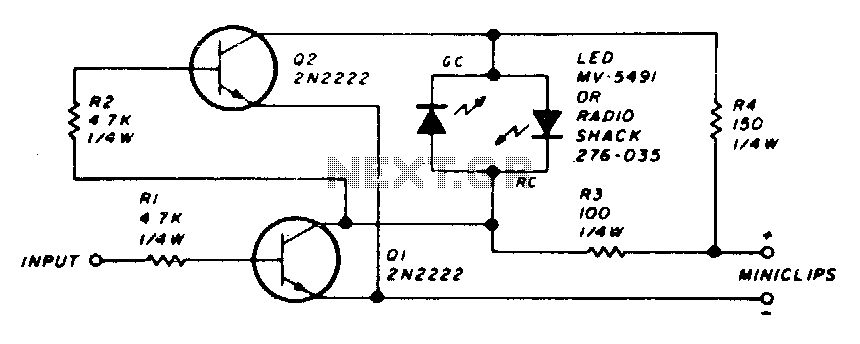
The circuit employs a dual LED configuration. When power is supplied to the probe through the power leads, and the input is connected to a low level or ground, transistor Q1 is turned off. This results in transistor Q2 conducting, as its base is positive relative to the emitter. With Q1 off and Q2 on, the green LED of the dual configuration becomes forward-biased, producing a green output. Conversely, if the probe tip is connected to a high level, Q1 and Q2 will operate in opposition, causing the red LED to become forward-biased and emit a red output. Additionally, an alternating signal will lead to alternating conduction between the red and green LEDs, resulting in an amber indication. This allows for the detection of both static and dynamic signals with the logic probe.
The described circuit functions as a logic probe, utilizing a dual LED to visually indicate the status of a digital signal. The design incorporates two NPN transistors, Q1 and Q2, which operate in a complementary manner. When the probe's input is at a low logic level (ground), Q1 is non-conductive, effectively cutting off its current flow. This lack of current through Q1 allows Q2 to become active, as the positive voltage at its base enables it to conduct. The conduction of Q2 leads to the forward biasing of the green LED, signaling a low logic state.
In contrast, when the probe is applied to a high logic level, Q1 becomes conductive, allowing current to flow through it while simultaneously turning off Q2. This complementary operation results in the red LED being forward-biased, indicating a high logic state.
The circuit also accommodates alternating signals, which can occur in digital applications. When an alternating signal is applied, both transistors will switch on and off in rapid succession. This rapid alternation causes the red and green LEDs to light up in a manner that blends their colors, producing an amber output. This feature is particularly useful for identifying not only static logic levels but also dynamic signal changes, making the probe versatile for troubleshooting and testing digital circuits.
The overall design emphasizes simplicity and effectiveness, providing clear visual feedback through the dual LED arrangement. The use of transistors allows for quick response times, making it suitable for real-time analysis of digital signals. The logic probe can be an essential tool in electronics for engineers and technicians, aiding in the diagnosis and verification of circuit behavior.The circuit uses a dual LED. When power is applied to the probe throughthe power leads, and the input is touched to a low level or ground, Ql is cut off. This will cause Q2 to conduct since the base is positive with respect to the emitter. With Ql cut off and Q2 conducting, the green diode of the dual LED will be forward biased, yielding a green output.
Touching the probe tip to a high level will cause Ql and Q2 to complement, and the red diode will be forward biased, yielding a red output from the LED An alternating signal will cause alternating conduction of the red and green diodes and will yield an indication approximately amber. In this manner, both static and dynamic signals can be traced with the logic probe.
The described circuit functions as a logic probe, utilizing a dual LED to visually indicate the status of a digital signal. The design incorporates two NPN transistors, Q1 and Q2, which operate in a complementary manner. When the probe's input is at a low logic level (ground), Q1 is non-conductive, effectively cutting off its current flow. This lack of current through Q1 allows Q2 to become active, as the positive voltage at its base enables it to conduct. The conduction of Q2 leads to the forward biasing of the green LED, signaling a low logic state.
In contrast, when the probe is applied to a high logic level, Q1 becomes conductive, allowing current to flow through it while simultaneously turning off Q2. This complementary operation results in the red LED being forward-biased, indicating a high logic state.
The circuit also accommodates alternating signals, which can occur in digital applications. When an alternating signal is applied, both transistors will switch on and off in rapid succession. This rapid alternation causes the red and green LEDs to light up in a manner that blends their colors, producing an amber output. This feature is particularly useful for identifying not only static logic levels but also dynamic signal changes, making the probe versatile for troubleshooting and testing digital circuits.
The overall design emphasizes simplicity and effectiveness, providing clear visual feedback through the dual LED arrangement. The use of transistors allows for quick response times, making it suitable for real-time analysis of digital signals. The logic probe can be an essential tool in electronics for engineers and technicians, aiding in the diagnosis and verification of circuit behavior.The circuit uses a dual LED. When power is applied to the probe throughthe power leads, and the input is touched to a low level or ground, Ql is cut off. This will cause Q2 to conduct since the base is positive with respect to the emitter. With Ql cut off and Q2 conducting, the green diode of the dual LED will be forward biased, yielding a green output.
Touching the probe tip to a high level will cause Ql and Q2 to complement, and the red diode will be forward biased, yielding a red output from the LED An alternating signal will cause alternating conduction of the red and green diodes and will yield an indication approximately amber. In this manner, both static and dynamic signals can be traced with the logic probe.
